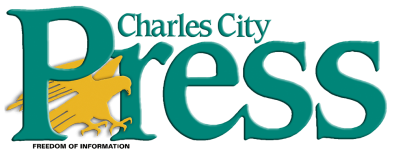Floyd County farmland value increases at slower pace than much of state
By Bob Steenson, bsteenson@charlescitypress.com
One year after skyrocketing 29%, the average value of an acre of Iowa farmland jumped another 17%, or $1,660, to $11,411 per acre.
The nominal value of an acre of farmland is again higher this year than at any point since Iowa State University began surveying values in 1941. When adjusting for inflation, the 2022 average value surpasses the previous inflation-adjusted record value set in 2013 for the first time.
Farmland values in Iowa have increased more than 15% in a year a handful of times since 1941, most notably in 2011, when values rose 32.5%, and last year, when values rose 29%.
 Floyd County showed a land value increase from 2021 to 2022, as did every county in the state, but the local increase was near the bottom end of the range of increases, at a 14.9% increase from $9,916 per acre average in 2021 to an $11,394 per acre average this year.
Floyd County showed a land value increase from 2021 to 2022, as did every county in the state, but the local increase was near the bottom end of the range of increases, at a 14.9% increase from $9,916 per acre average in 2021 to an $11,394 per acre average this year.
Surrounding counties’ increases ranged from 14.9% also in Mitchell County, to 16%-plus in Worth, Howard, Chickasaw, Bremer, Butler and Cerro Gordo counties, all the way to 18.5% increase in Franklin County. The increase in all but Franklin County was below the state average.
While inflation was a major factor that drove the increase last year, Wendong Zhang, an associate professor of economics and faculty affiliate of Center for Agricultural and Rural Development at Iowa State University, said that it did not play as much of a factor as did commodity prices, limited land supply and low interest rates through summer 2022.
Zhang, who is responsible for conducting the annual survey, said that inflation rates this year are similar to those from last year, but the Federal Reserve has used aggressive rate hikes since this summer to curb the problem.
“The Federal Reserve seems to be determined to keep raising interest rates until they get a firm control on inflation. This is a tricky balance because larger and quicker interest rate hikes run the risk of slowing down the economy, potentially to a recession,” Zhang said.
While he noted that higher interest rates put downward pressure on the land market, the effects typically don’t show up in land prices for one or two years.
Zhang said that 81% of Iowa farmland is fully paid for, so the higher interest rates don’t always affect farmers’ land purchasing decisions.
This is especially true when high inflation makes the real interest rates negative or low, which tends to incentivize more borrowing and investment.
Furthermore, a significant portion of respondents said that cash on hand was a positive factor influencing land values.
“Farmers have a lot more cash on hand and supply chain issues led to a shortage of equipment, so the money that farmers normally spend on equipment is now devoted to land,” Zhang said.
As for commodity prices, Zhang said they have been strong this year and yields have been higher than expected, despite weather challenges.
“Not only are crop prices much higher, livestock and poultry prices are also significantly higher, translating into higher farm income and profits,” he said.
For the first time, this year’s survey asked respondents’ views of current farmland values. Zhang said that 70% of respondents feel that current land values are too high or way too high.
“The higher land values do create an even higher entry barrier for beginning farmers, and the following increase in cash rents along with higher input costs could negatively affect producers, especially those with a lot of rented ground,” he said.
Zhang said that 48% of respondents forecasted an increase in farmland values one year from now, while 24% forecasted no change and 28% expected lower values. He said that most respondents expect the one-year value to either be the same or increase roughly 5% to 10%.
Looking five years ahead, Zhang said that 60% of respondents believe land values will increase 10% to 20% from current values, while about 24% forecast a decline in prices.
For the second year in a row, all 99 of Iowa’s counties showed an increase in land values. However, for the first time in almost a decade, Scott County did not report the highest overall value. O’Brien County topped the list this year, reporting a 20.6% increase, or $2,818 per acre, to $16,531. Decatur County again reported the lowest value, though land values there increased 10%, or $505 per acre, to $5,566.
Mills, Fremont, Page and Montgomery counties reported the largest percentage increase, 21.6%, while O’Brien County saw the largest dollar increase, $2,818 per acre. Wayne, Lucas, Appanoose, and Decatur counties saw the smallest percentage increase, 10%, while Decatur County saw the smallest dollar increase, $505 per acre.
Land values increased across all crop reporting districts. The Northwest district reported the highest overall value, $14,878 per acre, the largest percentage increase, 22.3%, and the largest dollar increase, $2,714 per acre.
The South Central district reported the lowest values, $6,824 per acre, and the lowest dollar change, $790 per acre, while the Southeast district saw the smallest percentage increase, 9.8%.
The Iowa State Land Value Survey is based on reports by agricultural professionals knowledgeable of land market conditions, such as appraisers, farm managers, agricultural lenders and actual land sales and is intended to provide information on general land value trends, geographical land price relationships and factors influencing the Iowa land market.
The 2022 survey is based on 668 usable responses from 443 agricultural professionals. Seventy-one percent of the 443 respondents answered the survey online.









Social Share